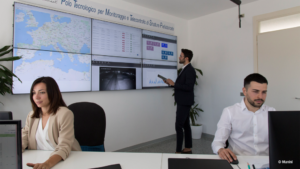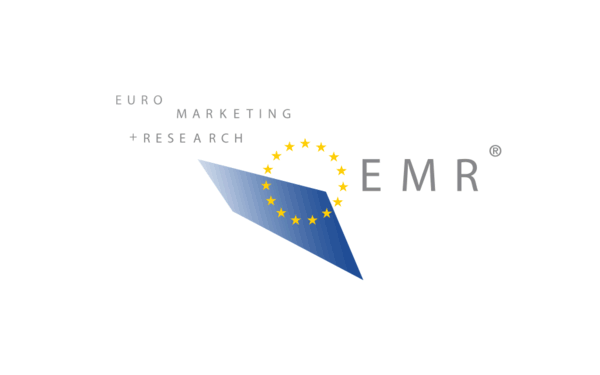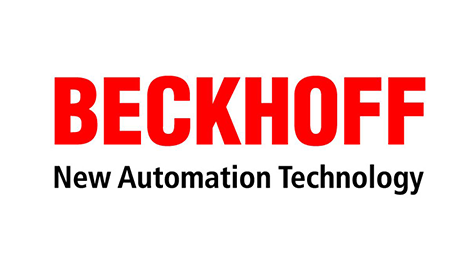Beckhoff – Reliable and dynamic condition monitoring for load-bearing building structures
 PC and EtherCAT-based control technology for monitoring solution implemented in shell construction
PC and EtherCAT-based control technology for monitoring solution implemented in shell construction
Load-bearing structures of bridges, high-rise buildings and other buildings are permanently subject to weather influences such as rain, snow and wind up to hurricane force or, at times, extreme events such as earthquakes. With increasing age, the static condition of buildings, especially in tectonically active regions, should therefore be carefully monitored, and it’s even better if the necessary monitoring technology has already been thought of in the shell construction. Italian construction company Manini Prefabbricati SpA has developed an active monitoring system for load-bearing structures that uses PC-based control from Beckhoff.
When natural events of above-average magnitude (earthquakes, heavy and sudden rain, wind and snow) affect buildings, the resulting high dynamic loads change the stresses in the structural members. This has a more or less permanent effect on the structural properties and nominal life of a structure. The Italian Ministry of Infrastructure and Transport takes this into account in its structural standard NTC 18, raising awareness of the need for greater protection and monitoring of new building structures.
Manini Prefabbricati SpA in Assisi (PG), together with the Institute of Civil and Environmental Engineering of the University of Perugia and the system integrator Umbra Control Srl, has developed an innovative monitoring solution for this purpose: Manini Connect is able to determine in real time whether the functionality and stability of a structure are in accordance with the design parameters. That is, dynamic structural monitoring makes it possible to evaluate the structural behavior of the building and thus also its stability. With the automated processing system, anomalies in the behavior of a structure after exceptional events can be detected immediately. In this way, the dynamic structural monitoring function helps to specifically evaluate the structural behavior of buildings.
The data from the Manini Connect condition monitoring systems converge in the monitoring center, but can also be accessed via cloud, tablet and smartphone thanks to the open automation architecture and PC-based control.
Real-time data acquisition provided from the start
The condition monitoring system is based on PC-based control from Beckhoff, EtherCAT for connecting the sensor technology, and an algorithm developed at the University of Perugia for managing the assessment criteria for earthquakes, the so-called seismic factor. Umbra Control is responsible for the implementation, from the design of the system architecture to the commissioning and maintenance of the cloud-based platform.
Already during production, the sensor technology of Manini Connect is integrated into the supporting concrete structures of a building and, after completion of the building, connected to the control cabinet for data evaluation and transmission to the monitoring center. Various sensors record the external and internal thermohygrometric properties of the building as well as their changes during dynamic loading. Special algorithms evaluate the signals and send early warnings or, if necessary, an alarm to the Manini Prefabbricati control center after special events such as an earthquake.
Since all sensor signals are sent to the control center in high resolution, the structural behavior of the structure can be monitored from there in real time. The corresponding software was developed by Umbra Control. It is used to manage all data and information and to control the installed sensor technology. If required, the installed sensors of an object can be checked, activated or deactivated – not only locally in the control room, but also via tablet and smartphone.
Robust industrial solution chosen as backbone
Umbra Control uses CX8190 Embedded PCs as control hardware and EtherCAT as communication backbone for Manini Connect. With the Embedded PCs and the open software architecture, the system integrator says it builds an optimal bridge between the sensor technology in the field and the cloud-based monitoring platform, with the Beckhoff automation software TwinCAT providing the foundation through its openness: data acquisition runs in real time in the TwinCAT Runtime and thus separately from downstream data transmission, processing and storage via the control center.
The use of EtherCAT as a powerful communication technology results in a maximally flexible and modularizable monitoring system, as the experts from Umbra Control explain: Regardless of topology changes or network expansions, the process image does not show any significant fluctuations with regard to the update time. The implemented solution can therefore be scaled as required, depending on the project, without having to adapt the monitoring system.
EtherCAT also ensures synchronization of the sensor data acquired in the field and simple integration of the various sensors connected via EtherCAT Box modules. With their high IP67 protection rating and the wide operating temperature range from -25 °C to +60 °C, the fully encapsulated I/O modules of the EP series also have no difficulty to withstand the often harsh operating conditions. Furthermore, the wide range of modules supports the integration of even special sensor signals, e.g. from the acceleration and inclination sensors that are already cast in during the concreting of the load-bearing structures.
The CX8190 Embedded PCs record both ambient conditions (temperature, wind strength and direction, humidity) and mechanical variables, correlate all acquired values and use them to detect emergency situations. PC-based control enables sufficiently fast sampling of the mechanical quantities to reconstruct the effects that a structure may have suffered after a seismic event using specific algorithms. Last but not least, the fact that Manini Connect was designed with proven industrial components ensures easy diagnostics, product interoperability through the use of standard protocols and long system life.
Efficiency, safety and continuous prevention
With Manini Connect, the structural behavior of the building can be interpreted in relation to the various external influencing factors. The monitoring system enables predictive maintenance according to the principles of intelligent building management. The aim is to maintain the functionality and stability of a building over its entire service life. Monitoring for anomalies reveals previously hidden signs of aging in good time and allows maintenance measures to be initiated long before the stability is endangered. PC-based control as an open control system ensures low installation costs and significantly reduced insurance premiums.
Source
Beckhoff
EMR Analysis
More information on Beckhoff: See the full profile on EMR Executive Services
More information on Hans Beckhoff (Managing Owner, Beckhoff Automation): See the full profile on EMR Executive Services
More information on TwinCAT Software by Beckhoff: https://www.beckhoff.com/en-en/products/automation/twincat/ + On the software side, the TwinCAT (The Windows Control and Automation Technology) automation suite forms the core of the control system. The TwinCAT software system turns almost any PC-based system into a real-time control with multiple PLC, NC, CNC and/or robotics runtime systems.
TwinCAT transforms almost any PC-based system into a real-time control complete with multiple PLC, NC, CNC, and/or robotics runtime systems. The possibility of modular extensions means functional changes and additions can be made at any time. If required, the openness of the control system allows not only the integration of third-party components, but also customized retrofit solutions for existing machines and systems. This ensures flexibility and investment protection for the customer.
More information on Manini Prefabbricati SpA: https://www.manini.it/ + Manini Prefabbricati is a national leader in the production of prefabricated systems, structures and components for the building industry. With the most modern criteria and technologically advanced systems, the four production sites (Bastia, Perugia, Aprilia, Lodi) respond punctually and effectively to market demands. Technological innovation is the fundamental strategic tool for the company’s commercial success: this has often allowed Manini Prefabbricati to anticipate and influence the evolutionary trends of the market
More information on Arnaldo Manini (President, Manini Prefabbricati SpA): https://www.manini.it/azienda/le-persone/
More information on the Italian Ministry of Sustainable Infrastructure and Mobility: https://www.mit.gov.it/en + Pursuant to art. 5 of the Law-Decree n°173 of November 11th, 2022, published in the Italian Official Journal n° 264 of November 11th, 2022, the Ministry of sustainable infrastructures and mobility has been taken on the name of Ministry of infrastructures and transport.
The Ministry of infrastructures and transport is responsable for a wide range of policy areas such as:
- planning, financing, implementing and managing the infrastructure networks of national interest as well as the public works falling under State responsibility;
- urban and housing policies also concerning both city systems and metropolitan areas;
- activities related to transport, viability and logistics on the Italian territory including:
- navigation, safety, maritime and inland waterway transport;
- civil aviation and air transport;
- road traffic, safety and land transport;
The Ministry, in performing its functions:
- collaborates with the Italian Coast Guard and the High Council of Public Works;
- acts in coordination with regional and local institutions also providing guidelines;
- handles international relations and agreements for Infrastructures and Transport sectors;
- guides, monitors and controls supervised or state-owned bodies as well as transport managers.
More information on Matteo Salvini (Minister, the Italian Ministry of Sustainable Infrastructure and Mobility): https://www.mit.gov.it/en/node/2923
More information on University of Perugia: https://www.unipg.it/en/ + The Università degli Studi di Perugia, founded in 1308, is one of the oldest universities in Italy and one of the most accredited, offering a wide variety of courses in all fields of education. Our goal is to provide students with the finest quality degree programmes and academic opportunities within a stimulating multicultural environment, along with the opportunity to enjoy an excellent lifestyle and foster their personal and academic growth while studying at the highest level. In addition to the many services and facilities available to all of our students, we offer specialized support services to International students, providing useful information about University courses, visas, health insurance services, enrolling procedures and everything students may need in order to enjoy their stay with us and benefit from an inspiring and supportive learning environment.
More information on Umbra Srl: https://umbracontrol.it/it + Umbra Control was born in Perugia in 1975 and began its activity in the security systems sector. Over the years the company has continued its growth path, always under the banner of innovation and research , interpreting market changes and customer needs in the best possible way. Today it is a recognized excellence that operates as a System Integrator : it designs smart technologies for the world of security , but also software for data management and integrated building automation systems , operating in all types of sectors, corporate, residential, public and private.
More information on Gianluca Ragni (President and Legal Representative, Umbra Control S.r.l.): https://www.linkedin.com/in/gianluca-ragni-58924131/
EMR Additional Notes:
- NTC 2018:
- The Italian decree NTC 2018 defines principles for the design, construction and testing of buildings, with reference to specific performance requirements.
- It also specifies the required characteristics of products and materials used in construction
- Embedded PCs:
- Embedded computer systems go by many names (Box PC, Gateway, Controller, Industrial PC, etc), but an Embedded PC is essentially any specialized computer system that is implemented as part of a larger device, intelligent system, or installation.
- Embedded Devices are less complex devices than Computers. Computers may be installed in other devices but are self-sufficient to exist. Embedded Devices only exist inside other Systems. Computers are more Difficult when used, compared to an Embedded System.
- EtherCAT:
- The Ethernet Fieldbus: https://www.ethercat.org/default.htm + EtherCAT is the open real-time Ethernet network originally developed by Beckhoff. EtherCAT sets new standards for real-time performance and topology flexibility.
- EtherCAT Technology Group:
- The worlds largest Industrial Ethernet organization with 6900 member companies: https://www.ethercat.org/en/tech_group.html + The ETG is a global organization in which OEM, End Users and Technology Providers join forces to support and promote the further technology development. The EtherCAT Technology Group keeps EtherCAT technology open for all potential users.
- Ethernet:
- Ethernet is a family of wired computer networking technologies commonly used in local area networks, metropolitan area networks and wide area networks. It was commercially introduced in 1980 and first standardized in 1983 as IEEE 802.3.
- Single Pair Ethernet (SPE):
- Single Pair Ethernet cables are copper cables that only contain one twisted pair (single pair) that they use for data transmission, for example in industrial applications.
- Describes the transmission of Ethernet over only one pair of twisted copper wires. In addition to data transmission via Ethernet, SPE also enables a simultaneous power supply of terminal devices via PoDL – Power over Data Line.
- As its name suggests, Single Pair Ethernet (SPE) cabling uses only one pair of wires to transmit data, as opposed to the two pair that have long been standard in the majority of Ethernet cabling in use worldwide.
- PoE (Power over Ethernet):
- Power over Ethernet (PoE) is the process of sending electrical power and data over copper wire. The combination of data transmission along with power supplying hardware onto the same RJ45 Ethernet connector allows for the transmission of power over the network cabling.
- As PoE technology has developed, the amount of power that can be sent over Ethernet cable has increased. IEEE-compliant PoE switches and injectors can output anywhere from 12 watts to over 70 watts of power per port.
- IP ratings (Ingress Protection):
- A two-digit number established by the International Electro Technical Commission, is used to provide an Ingress Protection rating to a piece of electronic equipment or to an enclosure for electronic equipment.
- The protection class after EN60529 are indicated by short symbols that consist of the two code letters IP and a code numeral for the amount of the protection.
- Example: IP65 (NEMA 4)
The two digits represent different forms of environmental influence:- The first digit represents protection against ingress of solid objects.
- The second digit represents protection against ingress of liquids.
- The larger the value of each digit, the greater the protection. As an example, a product rated IP54 would be better protected against environmental factors than another similar product rated as IP42.


